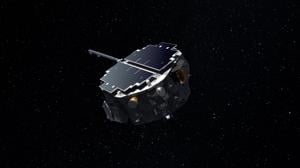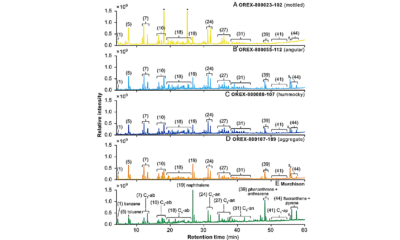Science
Astronomers Capture Stunning Image of Fomalhaut’s Unique Debris Disk

A team of astronomers has unveiled the highest resolution image of the debris disk surrounding the star Fomalhaut, offering unprecedented insights into its complex structure. Utilizing the Atacama Large Millimeter/submillimeter Array (ALMA), researchers have captured this remarkable view, shedding light on the dynamic forces shaping the ring-like formation around one of the brightest stars visible from Earth.
The image, released in December 2023, reveals a warped architecture that suggests the influence of evolving planetary bodies within the disk. Fomalhaut, located approximately 25 light-years from Earth, has long fascinated scientists due to its clear visibility and the intriguing properties of its surrounding debris. The new findings indicate that gravitational interactions with planets might be responsible for the unique shape of the disk, which has puzzled astronomers for years.
Unraveling the Mysteries of Fomalhaut
The debris disk of Fomalhaut is composed of dust and small celestial objects, which are remnants from the formation of the planetary system. The recent high-resolution images have allowed scientists to observe details that were previously obscured. The warped nature of the ring suggests that one or more unseen planets are exerting gravitational forces, leading to its peculiar configuration.
This research not only enhances our understanding of Fomalhaut but also has broader implications for the study of planetary systems. Understanding how debris disks evolve can provide insights into the formation and development of planets, including those within our own Solar System.
The ALMA telescope, located in the Chilean Andes, has become a crucial tool for astronomers studying distant celestial phenomena. Its ability to capture fine details allows researchers to explore the complexities of systems like that of Fomalhaut. This latest achievement underscores the importance of advanced observational technology in the field of astrophysics.
The Future of Astronomical Research
As astronomers continue to analyze the data collected from ALMA, further studies are expected to reveal even more about the dynamic environment surrounding Fomalhaut. The implications of these findings extend beyond this particular star, contributing to a deeper understanding of how planetary systems form and evolve throughout the universe.
The work surrounding Fomalhaut illustrates the ongoing quest in astronomy to comprehend the complexities of the cosmos. With each new discovery, scientists are piecing together the intricate puzzle of how stars and their planetary systems develop over time. This research exemplifies the exciting advancements in astronomical imaging and the potential for future discoveries that could reshape our understanding of the universe.
-

 Technology5 months ago
Technology5 months agoDiscover the Top 10 Calorie Counting Apps of 2025
-

 Health2 months ago
Health2 months agoBella Hadid Shares Health Update After Treatment for Lyme Disease
-

 Health3 months ago
Health3 months agoErin Bates Shares Recovery Update Following Sepsis Complications
-

 Technology4 months ago
Technology4 months agoDiscover How to Reverse Image Search Using ChatGPT Effortlessly
-

 Technology1 month ago
Technology1 month agoDiscover 2025’s Top GPUs for Exceptional 4K Gaming Performance
-

 Technology2 months ago
Technology2 months agoElectric Moto Influencer Surronster Arrested in Tijuana
-

 Technology5 months ago
Technology5 months agoMeta Initiates $60B AI Data Center Expansion, Starting in Ohio
-

 Technology5 months ago
Technology5 months agoRecovering a Suspended TikTok Account: A Step-by-Step Guide
-

 Health4 months ago
Health4 months agoTested: Rab Firewall Mountain Jacket Survives Harsh Conditions
-

 Lifestyle5 months ago
Lifestyle5 months agoBelton Family Reunites After Daughter Survives Hill Country Floods
-

 Technology4 months ago
Technology4 months agoHarmonic Launches AI Chatbot App to Transform Mathematical Reasoning
-

 Technology3 months ago
Technology3 months agoUncovering the Top Five Most Challenging Motorcycles to Ride




















